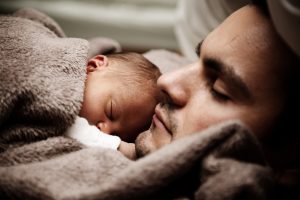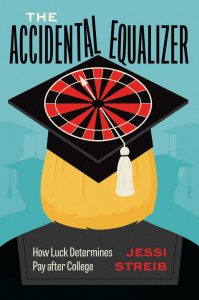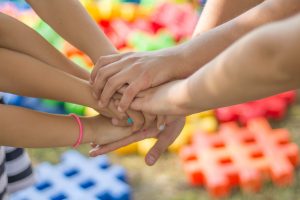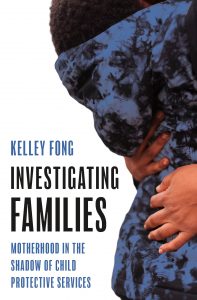The COVID-19 pandemic led many single adults to put a hold on dating, both for health concerns and social venue closures. For those who decided to keep dating, they were left with questions like, How could you meet someone if everything was shut down? Where would you go on a date if bars and restaurants were closed? How do you handle physical intimacy when even breathing the same air is dangerous? Single older adults faced additional concerns, not only because the virus was particularly deadly for this demographic, but because many in this group had not dated in decades and were trying to learn how to date in the middle of a pandemic. Would older adults continue dating, even when the health risks were higher?
Answering this question is not so straightforward. There are many layers to consider, including how older adults generally experience higher levels of loneliness and that these feelings may have increased because of pandemic isolation. Older adults who are single were at even greater risk of loneliness and isolation because they did not have a romantic partner with whom to isolate. The opportunity to meet other single adults also played a role, as older adults are using the internet frequently, and like many others, single older adults have increased their use of online dating. When older adults are feeling isolated and alone, they can connect with an endless number of peers to mitigate loneliness both in the immediate moment and in the long-term. Additionally, there is evidence that younger adults took safety precautions when dating during COVID, but it was not clear if older adults would do the same or limit their physical interactions with others.
In my recent research, I investigated how the context of the COVID-19 pandemic impacted single older adults’ dating experiences and desires. I recruited 100 single older adults, ages 60-83, from online dating websites to discuss their dating preferences and desires, and how they saw their experience in light of the COVID-19 pandemic. All respondents were single, heterosexual, and interested in dating to some degree, but varied by race, education level, marital history, family structure, employment status, and location. Since interviews were conducted in the latter half of 2020, all interviews included some discussion about the pandemic and the impact on dating for single older adults.
This research found that many single older adults were still interested in dating during a pandemic, despite the potential threat to their health and lives. In fact, older daters used COVID-19 health regulations to justify dating, alleviate their concerns for contracting the virus on a date, and get more creative with date ideas.
First, respondents took safety precautions in their daily lives, including limiting indoor interactions and wearing a face covering during interactions, and used these behaviors as evidence that meeting up with a new person would be safe, since they had been so cautious to not contract COVID-19. Next, single older daters followed safety directives while on dates. Audrey (age 68) went on a date where they had lunch outside, walked around for a bit, and wore face masks when they went into a shop. Fred (age 66) met a woman in a parking lot for a date, where they both stayed at their cars and talked through face masks. Though they were meeting new people in person, single older adults felt that their dates were safe because they followed healthcare directions in their daily life and while on dates, allowing them to justify meeting new people at a time when doing so could be dangerous.
Though both men and women spoke about COVID-safe behaviors and dating practices, men and women approached the issue differently. Men seemed generally less adherent to COVID-safe dating measures on their own, but the women they dated requested it. More men stumbled over planning a date during a pandemic because the standard dates of going to the movies or a restaurant were unavailable. Women, however, more often spoke of COVID-safe dating practices and provided a range of COVID-safe date ideas, from video calls to kayaking.
We may imagine single older adults would retreat from dating during a pandemic, when meeting in person posed a significant health risk, particularly among that population. Though this may be the case for many single older adults, those I spoke with pointed to the impact the pandemic had on their lives as leading them to date. This speaks to how deeply people, including older adults, can value and desire a romantic relationship. Even in times when meeting in person was dangerous and the common dating venues were closed, older adults used online dating and safety precautions to continue (or begin!) their search for a romantic partner. (Take a look at the article for discussion on the role of loneliness and the proliferation of online dating in prompting older adults to date in a pandemic.)
This study includes early COVID dating experiences, as data were collected between June and December 2020. Future research should investigate how COVID may (or may not) have a lasting impact on dating norms, for both younger and older adults. Additionally, this study focuses on those who are seeking a partner, so still little is known about how the pandemic and isolation impacted those uninterested in dating or in burgeoning dating relationships. This study does uncover, however, how single older adults used COVID precautions to justify dating during a pandemic, despite health risks and the closure of public places. This study helps to dispel some myths and finds older adults do not always take health risks as seriously as younger adults would assume and that romantic relationships are important to older adults. Single older adults value romantic relationships just like everyone else, even to the point that they are willing to stand next to their car in a large parking lot to see if there is chemistry with the person they met online.
Lauren Harris is an Assistant Professor of Human Development and Family Studies at the University of New Hampshire. Her research focuses on the meanings, processes, and transitions associated with developing romantic relationships, currently among older adults. You can learn more about her work here, here, and here, and on twitter @lauren_e_harris.







